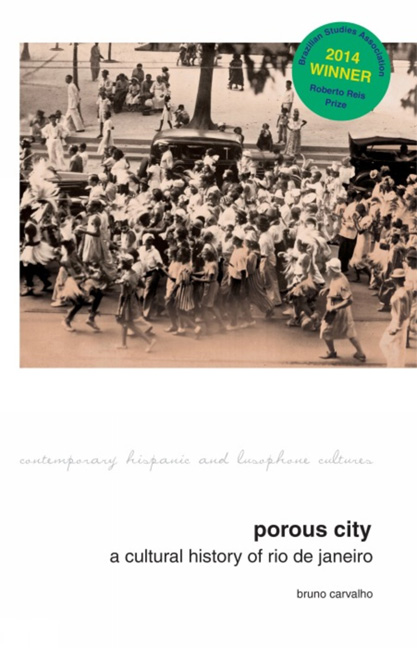Book contents
- Frontmatter
- Contents
- List of Maps
- List of Figures
- A Note on Translation
- Preface
- Introduction: In Search of Things Past: Mapping Rio
- 1 At the Centre of an Imperial Capital: Swamps, Yellow Fever, and Gypsy Parties
- 2 A Master on the Periphery of a Periphery: Popular Music, Streetcars, and the Republic
- 3 Beyond the Belle Époque: On the Border of a ‘Divided City’
- 4 Afro-Jewish Quarter and Modernist Landmark
- 5 Writing the ‘Cradle of Samba’: Race, Radio, and the Price of Progress
- 6 ‘It's (Mostly) All True’: The Death of a Neighbourhood and the Life of Myths
- Conclusion: The Future Revisited: Where Has the Past Gone and Where Will it Go?
- Acknowledgements
- Works Cited
- Index
Conclusion: The Future Revisited: Where Has the Past Gone and Where Will it Go?
- Frontmatter
- Contents
- List of Maps
- List of Figures
- A Note on Translation
- Preface
- Introduction: In Search of Things Past: Mapping Rio
- 1 At the Centre of an Imperial Capital: Swamps, Yellow Fever, and Gypsy Parties
- 2 A Master on the Periphery of a Periphery: Popular Music, Streetcars, and the Republic
- 3 Beyond the Belle Époque: On the Border of a ‘Divided City’
- 4 Afro-Jewish Quarter and Modernist Landmark
- 5 Writing the ‘Cradle of Samba’: Race, Radio, and the Price of Progress
- 6 ‘It's (Mostly) All True’: The Death of a Neighbourhood and the Life of Myths
- Conclusion: The Future Revisited: Where Has the Past Gone and Where Will it Go?
- Acknowledgements
- Works Cited
- Index
Summary
Brasil
Tua cara ainda é o Rio de Janeiro
3 × 4 da foto e o teu corpo inteiro
Precisa se regenerar.
[Brazil / Your face is still Rio de Janeiro / The 3 × 4 photo and
your whole body / Must regenerate]
Aldir Blanc, Moacyr Luz, and Paulo César Pinheiro, ‘Saudades da Guanabara’ (1995)The future envisioned with the construction of the President Vargas Avenue did not arrive, at least not according to plans. Built during the Second World War, espousing a style that could be associated to the losing side, the avenue can be ascribed to what Beatriz Jaguaribe calls modernist ruins, the ‘fracturing of a previous ethos that was never fulfilled and has already become dated’ (2001: 343). Many of the skyscrapers imagined for the area were never built. Rather than usher a new era of progress, the reforms left Rio with a thoroughfare that would be considered by a prominent architect as ‘the ugliest in the world’. It would also leave Rio a more divided city.
The port area neighbourhoods, along with Brazil's primordial favela, the Providência, became increasingly cut off from the rest of the city and entered a period of accelerated decadence. After the loss of so many buildings, residents, and references like the Praça Onze, the Cidade Nova never recovered its protagonism in Rio de Janeiro. This reduced importance cannot be detached from the growth of a city that reached a population of over 2.3 million in 1950, a number that would more than double by 1980 and exceed 6.3 million in 2010. No single urban space, or configuration of places, could claim to have as much centrality in the socio-cultural fabric of such a megalopolis.
At any rate, Rio's centre of gravity – or at least its most visible spaces – kept shifting towards the South Zone and the beachfront. The 1937 building code established the city's central areas as a commercial zone, paving the way for a process that reduced their diversity and vitality. Levelling of the Santo Antônio Hill during the 1950s freed up new spaces for construction in the Centro, rendering the area around the President Vargas Avenue less crucial for development.
- Type
- Chapter
- Information
- Porous CityA Cultural History of Rio de Janeiro (from the 1810s Onward), pp. 192 - 205Publisher: Liverpool University PressPrint publication year: 2013

